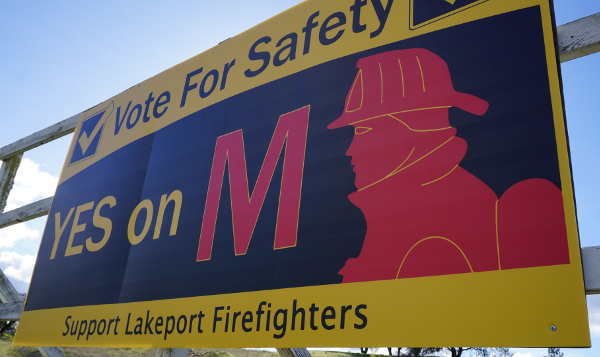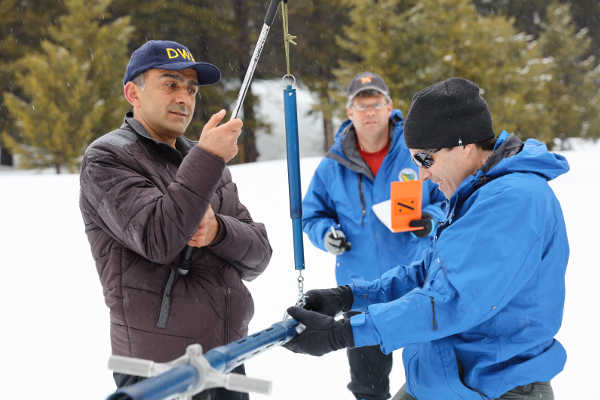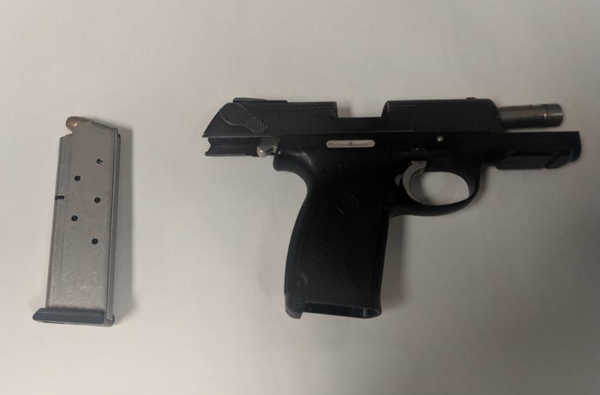- Elizabeth Larson
- Posted On
Lakeport Fire Protection District asks voters to decide on Measure M parcel tax in May

LAKEPORT, Calif. – The Lakeport Fire Protection District is preparing to put a fire tax measure before voters next month, a step officials have said is necessary to put the district on a solid financial footing.
Measure M ballots are going out to thousands of voters next week. The all-mail ballot election is set for May 7, but ballots postmarked by that date will be accepted up until May 10, according to interim Lakeport Fire Chief Rick Bergem.
The measure requires a two-thirds supermajority – or 66.7 percent – yes vote to pass. If it does pass, it will go into effect on July 1.
The need for more district revenue came into sharp relief in September when the district board voted to approve a budget that called for laying off three full-time firefighters, less than two months after the city had been completely evacuated due to the River fire portion of the Mendocino Complex, as Lake County News has reported.
District officials said Measure M will allow them to restore the positions eliminated last year and improve response times to a growing call volume. In 2018, Lakeport Fire responded to more than 3,000 emergency calls; that’s compared to the 938 calls it had in 1997, the year that voters last approved a district parcel tax.
Should the measure not pass, the district said staffing levels will remain low and homeowners and business owners could face increased insurance rates or denial of coverage. That’s because the Insurance Services Office is due to assess Lakeport Fire in 2020. That agency creates ratings for fire departments and their surrounding communities, with the ratings calculated based on how well-equipped fire departments are to suppress fires in the community.
Bergem said the district serves about 10,000 residents in an area covering nearly 45 square miles – extending from the Nice-Lucerne Cutoff to the top of the Hopland Grade and Cow Mountain, and then down to Argonaut Road.
Since the board approved the budget cuts last year, two new members have taken their seats – Alan Flora and Bill Gabe – and the district submitted an application for a federal grant that would help restore the laid-off positions.
In response to its budget shortfall, the district also crafted Measure M. In February, the district board held a public hearing and approved Resolution 1819-13, calling for the all-mail ballot on May 7.
The abbreviated statement of the measure to appear on the ballot says: “To decrease response times and increase fire protection/emergency medical services by increasing staffing at fire stations; and to maintain/replace outdated firefighting equipment, shall the Lakeport Fire Protection District Measure repealing existing fire protection services taxes and levying a tax of $6.14 per benefit unit annually on each parcel of property in the District be adopted, estimated to raise about $1,206,000 annually; until ended by voters, with independent community oversight and all money staying local?”
The effort now is centered on getting the word out about the measure, which no one filed an argument against for the ballot.
For their part, members of the firefighters’ union along with volunteers have been rolling out a public outreach campaign that includes campaign signs, t-shirts and information pamphlets.
They also are going door to door to speak to voters and answer their questions, with mailers also set to go out to district residents.
“They’re taking care of all of that now right because the district can’t campaign, basically,” said Bergem.
Bergem said that, so far, the response has been very positive. They’ve had some community members come in to ask questions, including one man who came to query the board at its March meeting about how the properties are assessed.
In an effort to answer questions that community members have brought up so far, Flora created a draft five-year revenue projection and expenditure plan, which can be seen below.
It’s meant to offer both transparency and accountability, with the additional intention of giving the community an idea of what the district would likely be focusing on if the measure passes, he said.
The measure allows for a consumer price index adjustment not to exceed 3 percent annually. Flora’s projection includes a 2-percent annual CPI increase, which he said he thinks is realistic over time.
That expenditure plan forecasts $1,206,000 in the first year, rising slightly each year to total $1,304,413 in year five.
Among the key items covered by the new funding source would be six additional personnel, adding two people to each shift. There also will be equipment upgrades, an engine replacement in year three – budgeted at $200,000 but likely to cost more.
It also will address deferred maintenance at the district’s stations, including the main station, Station 50 in downtown Lakeport. The building is owned by the city of Lakeport but the district is responsible for maintenance, and it needs a new roof.
Station 52, located in north Lakeport, could be operational with some upgrades. Flora said it’s just being used for equipment storage currently.
Under the expenditure plan, $148,760 would be added to district reserves in year one, $228,913 in year two, $58,979 in year three, $213,951 in year four and $68,821 in year five.
If passed, Measure M wouldn’t begin to bring in new revenue for the district until next year. Until then, the district is still facing major budget challenges, including a projected $300,000 shortfall in the current fiscal year and the anticipation of a lot of work to balance the budget by the time the fiscal year ends in June, according to Flora’s tabulation at the March board meeting.
As a result, the board is holding monthly budget discussions as part of its regular meetings and directed Bergem not to make any expenditures that aren’t critical through the fiscal’s year end.
Whether the district receives approval for Measure M also will likely impact the board’s decision on whether or not it should sell its Finley station – which is currently being used by the Clearlake Gleaners food bank.
The district board discussed the possibility of selling the station – as well as a lot of surplus equipment – during its March meeting. Bergem also has suggested the station could be retained, renovated, reopened and staffed by volunteers, which could benefit insurance rates for residents of that part of the district.
How the parcel tax works
If passed, Bergem said Measure M would supersede two previous, separate parcel taxes – one for properties in Lakeport’s city limits, one for those in the unincorporated county – passed in 1997. “Everyone will be paying the same.
Measure M will be levied up to a maximum rate of $6.14 per “benefit unit, which Flora explained is based on the use of the property.
He said a single family residence is classified as 30 benefit units. “So the vast majority of residents would pay $184.20.”
Flora explained that if you have a house on a quarter acre lot or a house with three barns on five acres the payment would still be $184.20. He said it doesn’t change for a 1,000 square foot house or a 5,000 square foot house.
Commercial property owners pay per square foot and vacant land – or ag land pay – per on a sliding scale based on acreage, he said.
“There are some critics to this type of calculation but it’s what most districts use as far as I know,” Flora said.
Residential units including single family dwellings, mobile homes, mobile homes in parks, duplexes would be billed at 30 units, or $184.20 per year, while multifamily units or apartments would be 15 units, or $92.10 per year. Convalescent and rest homes would be 70 units, or $429.80.
For commercial and industrial or institutional properties, units would be as follows:
– 0 to 999 square foot buildings: 50 units, $307 per year.
– 1,000 to 4,999 square foot buildings: 70 units, $429.80 per year.
– 5,000 to 9,999 square foot buildings: 100 units, $614 per year.
– 10,000-plus square foot buildings: 150 units, $921 per year.
– More than one business in a building: 75 units per additional unit, $460.50 per year.
– Hotels and motels: 0 to 10 rooms, 25 units, or $153.50; more than 10 rooms, one unit, or $6.14, per room over 10.
Vacant properties billing rates are:
– Up to 5 acres: 10 units, $61.40 per year.
– 5.01 to 10 acres: 15 units, $92.10 per year.
– 10.01 and above: 20 units, $122.80 per year.
How the election will be handled
Fire district officials have had concerns about the mechanics of the upcoming election, which will be overseen by the Lake County Registrar of Voters Office.
That agency currently is being overseen on an interim basis by County Administrative Officer Carol Huchingson as the second recruitment for a new registrar just ended.
In December longtime Registrar Diane Fridley retired and her expected successor, Deputy Registrar Maria Valadez, was appointed by the supervisors on an interim basis. Huchingson had attempted in October to keep Valadez from being appointed on a permanent basis by a proposed change to educational requirements that the board didn’t accept. Valadez then took a better job offer in Mendocino County in February.
Flora, who last month became Clearlake’s new city manager and who has worked for the county of Lake, raised issue with the county’s ability to conduct the election in the midst of the registrar’s issues.
“It's just very concerning that they're going to be able to handle this measure successfully,” he said at the March district board meeting.
He said he has expressed his concerns and frustrations to the County Administrative Office.
“Obviously it’s a big problem if they can’t uphold their responsibility and make sure it gets administered correctly,” he said.
In March, another concern arose – a change in voting equipment.
The county of Lake has used DFM Mark-A-Vote, an optical scan paper ballot voting system, since 1983.
In February, California Secretary of State Alex Padilla began the process of withdrawing certification or conditional approval of voting systems that were not tested or certified under the most recent state security standards, which included Mark-A-Vote, effective Aug. 27.
Ahead of that deadline, on March 19, the Board of Supervisors approved purchase of Hart InterCivic’s Verity Voting 3.0.1 Voting System, as Lake County News has reported.
At that meeting, Karen Clakeley, Hart InterCivic’s director of sales and strategic accounts, said the company would have a team of three people on site in the Lake County Registrar of Voters Office for the first local election.
Both Bergem and Flora told Lake County News that they had not had clarification from the county on whether or not it was in fact planning to go forward with using the new equipment or would use the Mark-A-Vote system for one final time for the Measure M election.
“It seems crazy to me to rush into using the new equipment on this tight of timeline, but I don’t know the plan,” Flora said.
Huchingson confirmed to Lake County News this week that the Hart InterCivic equipment will be used for the May 7 election, with Hart staff to be on site to assist.
Email Elizabeth Larson at This email address is being protected from spambots. You need JavaScript enabled to view it.. Follow her on Twitter, @ERLarson, or Lake County News, @LakeCoNews.
Measure M expenditure plan by LakeCoNews on Scribd
Lakeport Fire ordinance - Measure M by LakeCoNews on Scribd












